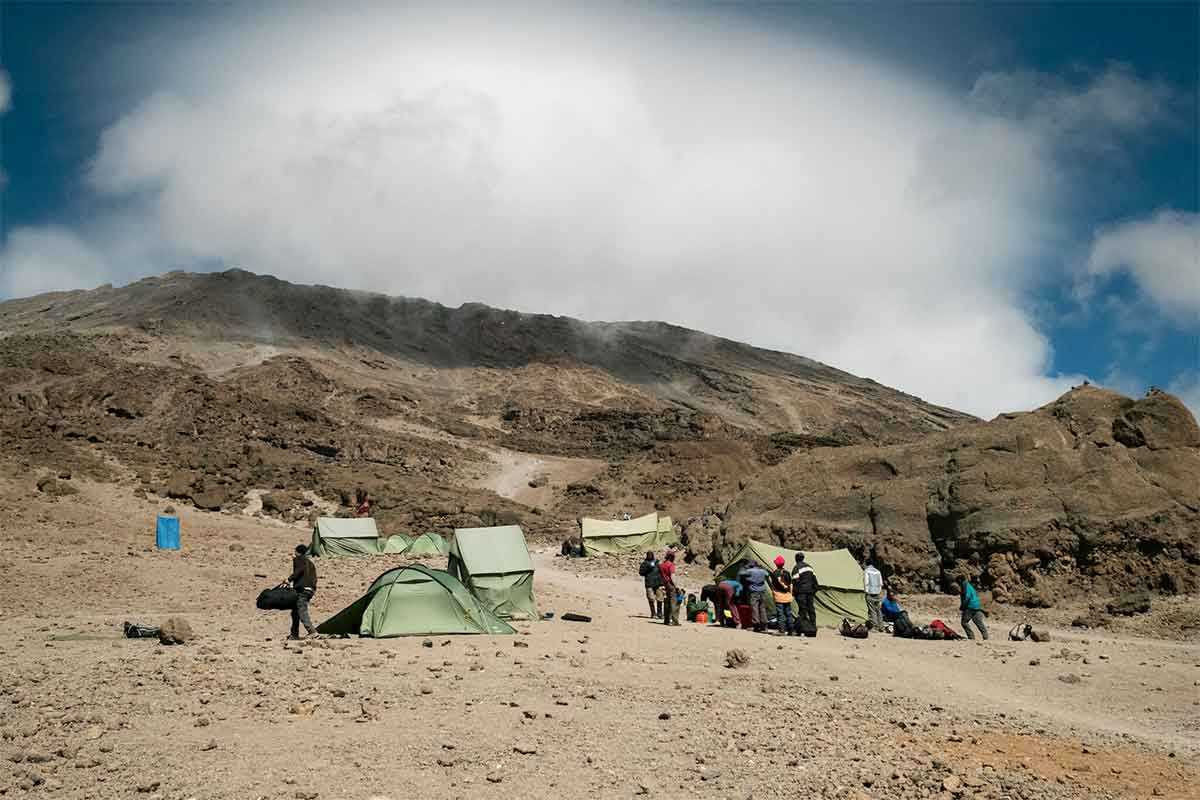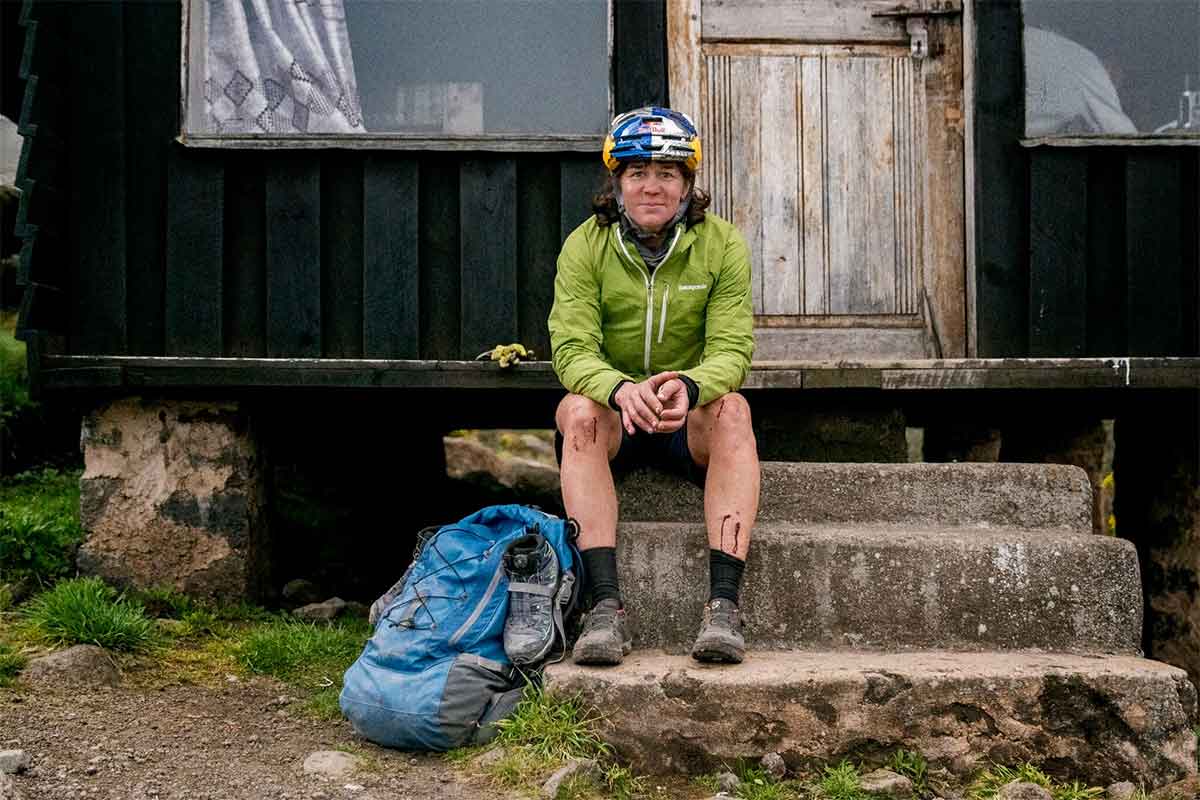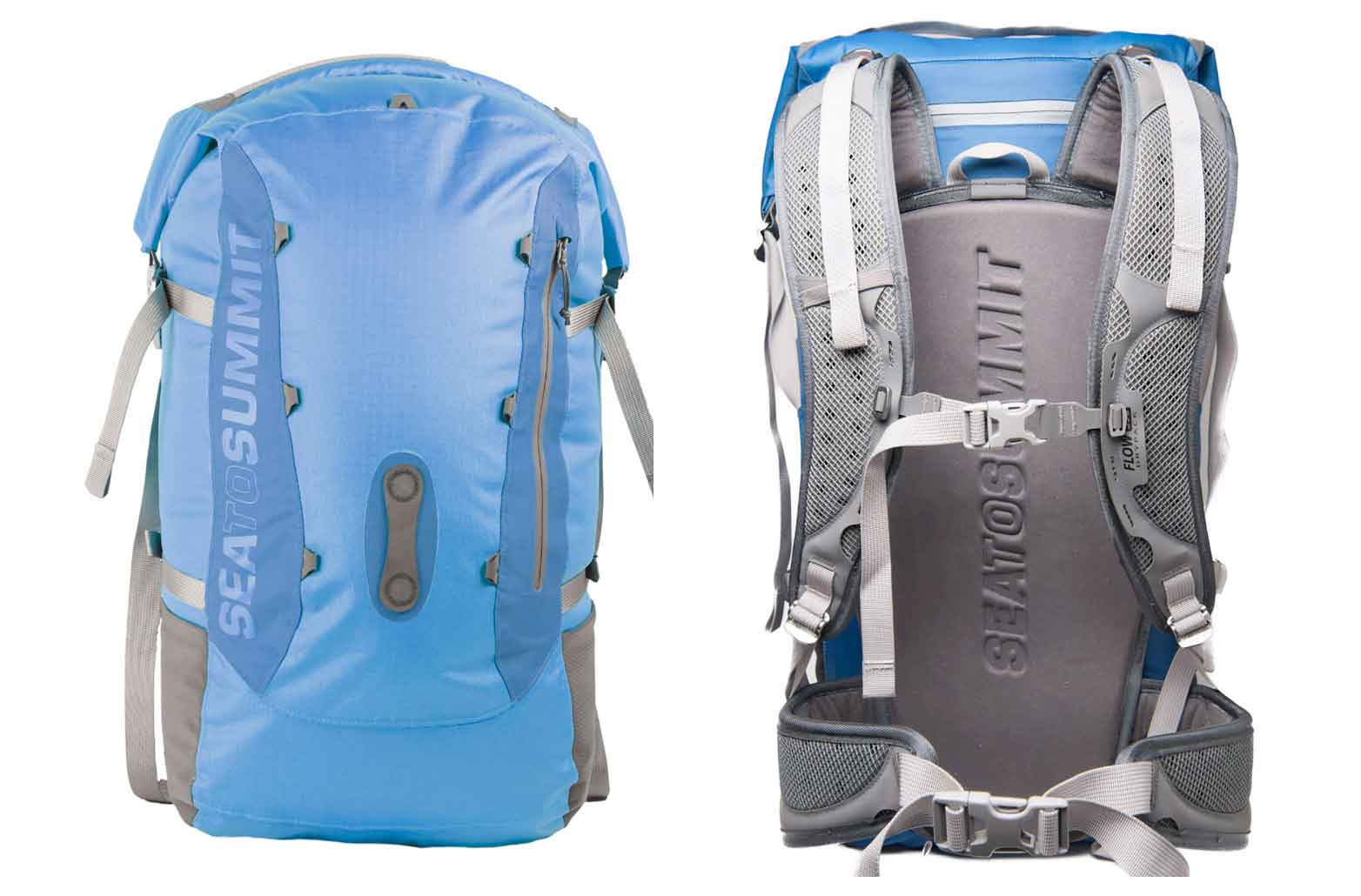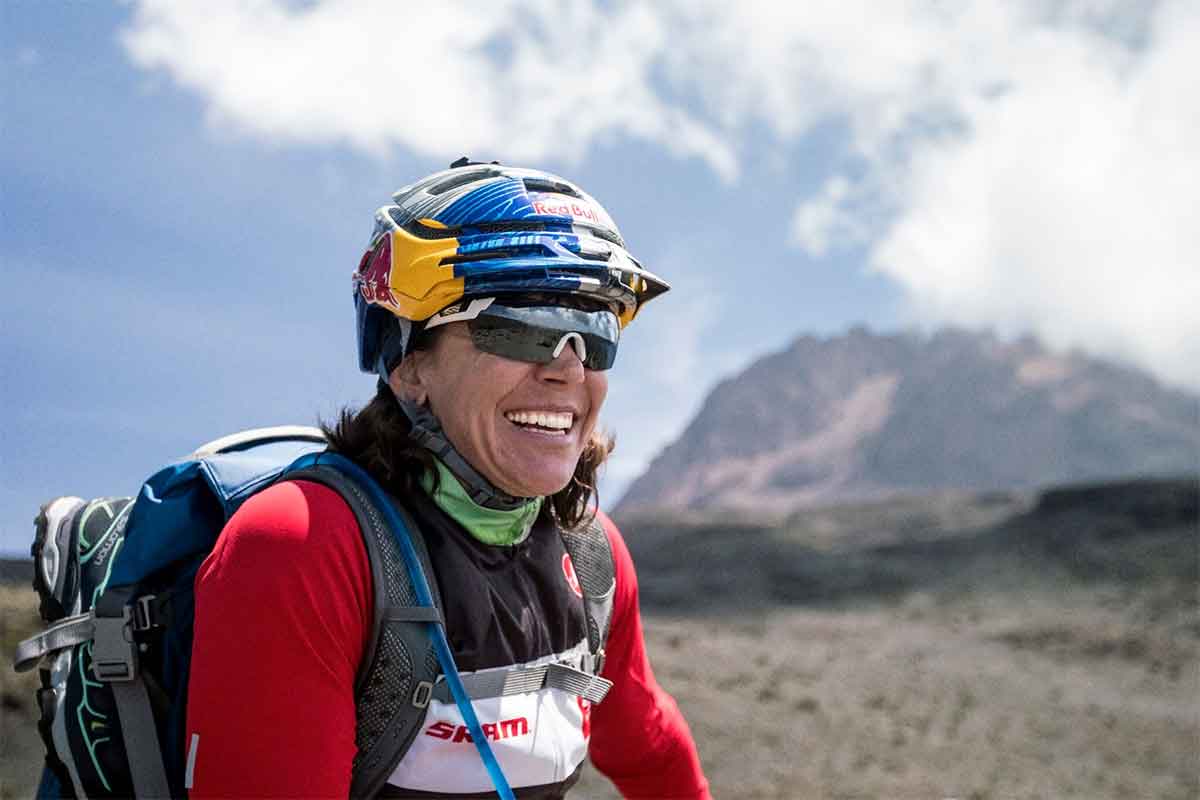‘I did not have a gear low enough.’ -Rebecca Rusch
Imagine pedaling uphill for days. This February, two adventurers traded hiking boots for bike tires to pedal up (and down) Africa’s highest peak.
Mountain biking is usually singletrack and dirt berms. But earlier this year Rebecca Rusch and Patrick Sweeney took the sport quite literally, riding up a mountain, from base camp to 19,341 feet.
Technically a volcano, the pair rode to Kilimanjaro’s summit on existing climbers’ trails, pushing or hauling their bikes where the terrain got too steep. The project, sponsored by Red Bull, Sea to Summit, Buff, BOA, CamelBak, Big Agnes, and other brands, was an effort to raise money for the global charity World Bicycle Relief.

In the end, they made the top, raising $19,341 for the charity along the way to finance 131 new bikes for students in Africa. Back home, we caught up with Rusch to sync on the experience, some hard moments, and the gear that got her through.
Interview: Rebecca Rusch Bikes Kilimanjaro
Before leaving home how do you organize gear for a trip like this?
Rebecca Rusch: This was a very gear intensive trip. To start, I just lay out all of my gear on a pool table, then I edit it down. I try and get things as light as possible and also stress organization. I have blue bags for batteries, an orange bag for toiletries I need, and so on. Get it all dialed before you leave and things go so much smoother once on site.

How did you decide to bike Kilimanjaro?
Patrick Sweeney invited me about a month out to join him. He has a “bike 7 summits” project, and for this one I was invited to loop in with Red Bull. Pretty last minute! It morphed into an expedition right away.
Who was involved in the effort?
On Kilimanjaro you are required to have guides and porters. However, I carried all my gear and food for the ascent. The porters carried water and cooking pots. Our guide was president of the Kilimanjaro guiding association. And we had two film crews; they climbed to 19,000 feet.
Tell us about the climb.
It was on par with some of the long, multi-day adventure races I did years ago. As a bike ride, it was the hardest I have done, with 50 miles over six days. But altitude and the unknown factors of the trail and terrain was really the challenge. Also, I have had trouble at altitude before, so there was some trepidation.

Top to bottom, tell us about the terrain?
Going up from the base, you pass through all these ecosystems, from jungle and mosquitos and mud, then moss on trees, then flowers and plants, it’s always changing. Then up beyond 14,000 feet there’s nothing up there, just rocks.
What was the trail like?
From about 12,000 to 15,000 feet there was some of the best singletrack on wide open moonscapes. The monolith of Kilimanjaro gives an unobstructed view, and you can see forever. Overall, that part was more rideable than we thought it’d be.
But it was a hiking trail, so there were a lot of challenges. You had to be really good at a track stand. And you needed to keep pace and not go too hard, mainly because the altitude is so high.
Did you ride to the very summit?
On summit day we rigged bikes on our packs for the final stretch. But I did actually ride the last few feet right onto the summit.

What did the climbers say when you were biking up?
Lots of looks. The porters were staring at us. But when we were coming down we heard a lot of “I wish I had bike,” and “that looks fun!”
Tell us about your bike.
Niner is my sponsor, and the bike setup was unique. The project was going to have technical biking on way down, and I was more worried about the descent when creating this bike. I was wanting to keep it light, but that was second to making sure it was rideable on the peak. I added a 130mm fork for more cush. I ran with bigger, beefier tires with thicker sidewalls, and I also added a dropper seat post. The total weight was about 26 pounds.

You had to carry your bike a lot of the way?
The backpack was a big deal, as it needed to hold everything and carry a bike, too. I created a custom way to rig the bike on my back using the Sea to Summit Flow Pack (see above). I used the compression straps to rig the bike to the pack. It was slick.
Sea to Summit was a sponsor. Tell us about some of the gear used from that brand.
I used a lot of products from the brand. But one thing that I think readers might be interested in, as I noted, I like to compartmentalize my gear, with everything in its own little place. Then all those pieces go in bigger Sea to Summit sacks and bags. It’s all color coded. It saves both time and emotional energy over the course of an expedition, not having to worry about where things are.
For this trip, I had 10 bags total, including for food, storm gear, medical, camera stuff, etc. It might sound like overkill, but after doing this for years it’s what works, and it’s become an essential way for me to pack.
–Article sponsored by Sea to Summit. Connect with adventurers Rebecca Rusch and Patrick Sweeney.









